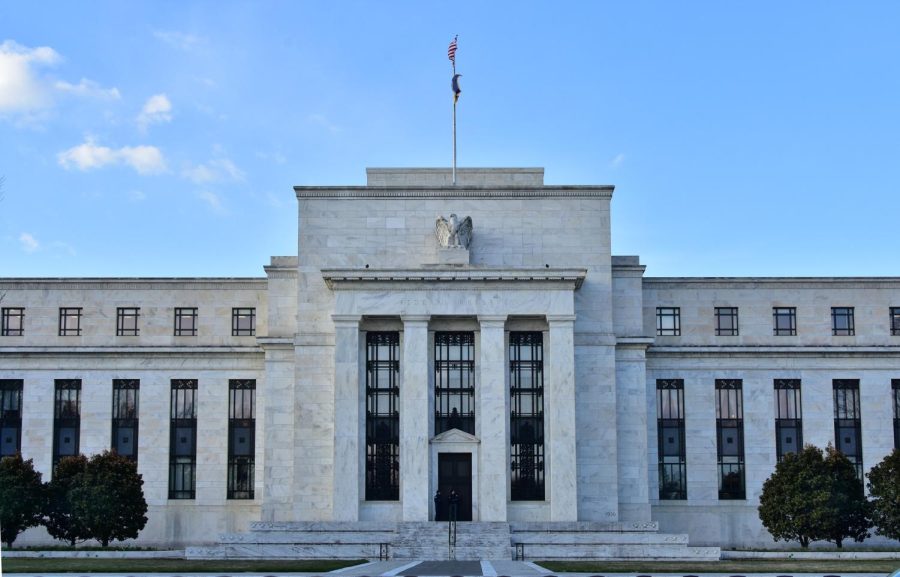Federal Reserve raises interest rates by half percentage
May 14, 2022
The Federal Open Market Committee of the Federal Reserve increased its interest rate by half a percentage point on May 4, its second rate hike this year.
The inflation rate sits at 8.5%, the highest rate in 40 years, while supply and demand imbalances remain due to pandemic-related supply chain disturbances.
The Fed announced that energy prices remain high as the Russian invasion of Ukraine disrupts the global energy supply, and coronavirus-related lockdowns in China will also likely impact supply chains. These events are creating upward pressure on inflation, leaving the U.S. economy “highly uncertain” about the future, according to a press release from the Fed Board.
The committee is determined to bring the inflation rate down to its goal of 2% over the long run. To achieve this, the committee decided to raise the federal funds rate to its target rate of 1%.
The increase projects a rough couple of months for businesses and consumers. Inflation is projected to remain elevated with an increase in interest rates.
Even so, uncertainty is leaving consumers and businesses apprehensive. As businesses slowly reopen, travel restrictions alleviate and consumers try to return to their pre-pandemic lives, the Fed’s decision will cause a lot of unexpected market behaviors.
There are still some certainties that consumers can expect, such as savings and credit card rate increases reflecting the interest rate hike. Loans for cars and houses are affected by a consumer’s credit history, meaning the latest hike can greatly impact buyers’ loan rates.
“Borrowers with poor credit may pay 20% or more, while those with pristine credit might qualify for rates near zero,” Jonathan Smoke, the chief economist at industry consulting firm Cox Automotive, told The New York Times.
Loans on homes are not directly affected by the federal funds rate, but they are reflected in the yield on 10-year Treasury bonds. The yield is highly influenced by market participant expectations of the state of the economy, which is largely affected by the decisions of the Fed.
The cost of borrowing will go up as loan and financing rates increase. These increases will drastically impact those in lower-income brackets.
The increase in rates is intended to slow down the demand for goods and services and achieve a lower inflation rate.
Investors worry, however, that the Fed is raising interest rates too high and too fast, which could potentially bring the economy into another recession.
The hike in interest rates can impact everyday decisions businesses and consumers face.
For one, the stock market showed a stark increase in volatility amid the announcement. As of May 10, stocks are edging lower as investors worry about the Fed’s slow response to high inflation rates that are projected to remain.
The expectations of market participants based on the federal funds rate can highly influence the direction of the economy. This will not be the final rate increase, as the Fed signaled its intent to increase the rate by the same amount at its next two meetings.
“There is a broad sense on the committee that additional 50 basis point increases should be on the table at the next couple of meetings,” Fed Chair Jerome Powell said at a news conference on May 4.







